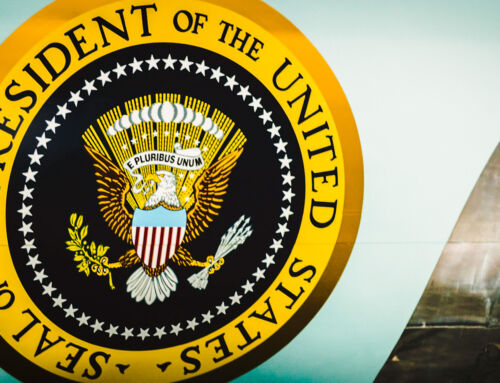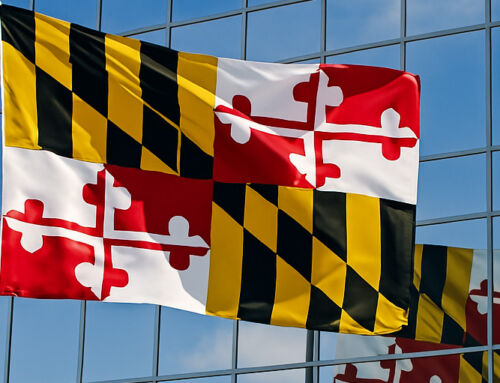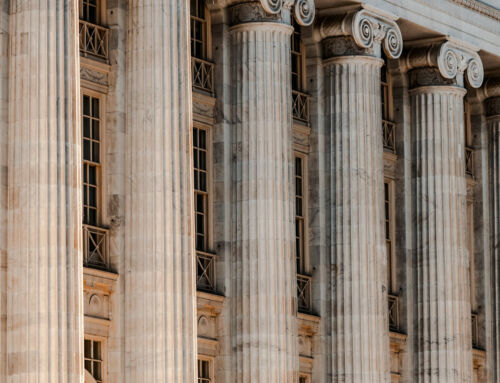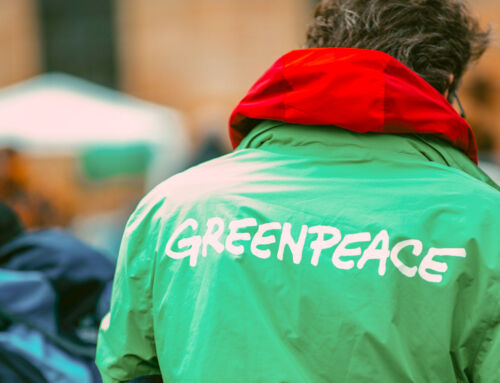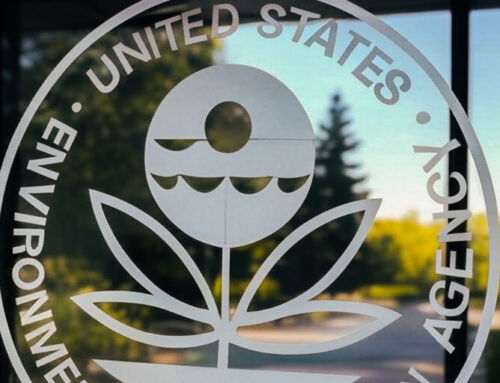View by Topic
Recent Articles
-
President Trump’s Bold Step to Rein in State Overreach in Climate ChangeSaturday, April 12th, 2025
-
Mandatory GHG Disclosures in Maryland Real Estate ContractsSaturday, April 5th, 2025
-
NYC Building Electrification Ruling is Interesting But Not a Game ChangerSaturday, March 29th, 2025
-
Greenpeace Ordered to Pay $667M in Blow to ActivismSaturday, March 22nd, 2025
-
The Most Consequential Day of Environmental Deregulation in American HistorySaturday, March 15th, 2025
View by Month/Year
“Green Building Law Update” Headlines
Recent Articles & News from
Stuart Kaplow’s blog
at GreenBuildingLawUpdate.com
- President Trump’s Bold Step to Rein in State Overreach in Climate Change April 13, 2025
- Mandatory GHG Disclosures in Maryland Real Estate Contracts April 6, 2025
- NYC Building Electrification Ruling is Interesting But Not a Game Changer March 30, 2025
- Greenpeace Ordered to Pay $667M in Legal Blow to Environmental Activism March 23, 2025
Subscribe to the Green Building Law Update!
Stuart Kaplow brings his expertise and extensive experience to the table with his unique digital publication, "Green Building Law Update". Subscribers receive regular updates to keep them informed about important issues surrounding Environmental Law, Green Building & Real Estate Law, as well as the emerging demand for Environmental Social Governance (ESG).
Get fresh content through the lense of Stuart Kaplow's cutting-edge expertise, innovative commentary and insider perspective. Don't miss another issue! Subscribe below.
LEED v4 Buildings Can Register Beginning in November 2013
The U.S. Green Building Council announced last week that LEED v4®, the newest version of its green building rating system had been approved by an affirmative vote of more than 86% of those in the consensus body of members.
The USGBC all but created the modern field of sustainability in the building and construction industry with the unveiling of the first version of LEED in March 2000. LEED gave us the words and terms to describe and measure green building. Today, more than 53,000 projects are currently participating in LEED, comprising more than 10.1 billion square feet. LEED is certifying 1.5 million square feet of building space every day in 135 countries.
And all of that is going to change, albeit change for the better.
LEED has already transformed the real estate marketplace. In 2005, green building comprised less than 2% of the U.S. non-residential construction market and in 2012 that same index, using the Dodge Reports, reported green building comprised almost 44% of non-residential construction. The vast majority of that green building is LEED.
LEED v4 is intended to sustain that market transformation.
v4 will launch in November 2013 at the USGBC Greenbuild Conference and Expo in Philadelphia. There are already 100 projects registered for a v4 beta pilot and enrollment in that beta program is still open.
Projects will still be able to register under the current LEED 2009 through June 1, 2015. That extended date, announced last summer when the vote on LEED 2012 (now LEED v4) was delayed, in large measure because the economy battered real estate industry was not ready for the ambitious new rating system.
v4 is not simply a step in the continuous improvement of the rating system. And while not a Neil Armstrong “giant leap for mankind” v4 is an all but an entirely new third party verified green building rating system.
First among the changes is the new global emphasis. Today there are LEED projects in at least 135 countries. At year end 2012, approximately 40% of all square footage pursuing LEED certification existed outside the U.S. To further seed LEED across the globe, through its LEED Earth initiative, USGBC is currently offering free certification to the first projects to certify in 112 countries from Bhutan to Tanzania.
Second, v4 will be applicable to a wider variety of project types. v4 addresses 21 different market sector adaptations, including new and existing data centers, new and existing warehouse and distribution centers, hospitality, existing schools, existing retail, and multifamily midrise. By bringing these market adaptations into the suite of LEED rating systems, USGBC removed barriers so that even more facilities can participate in LEED.
Third, with LEED Existing Building – Operations and Maintenance certifying more than half of all the domestic floor area in the LEED system in 2012, LEED is no longer only a new construction standard. So, a wholesale change to EBOM is or paramount import. The key change, beyond increased rigor, is that EBOM now has an Establishment component and a Performance component (tracking actual performance) and requiring recertification every five years.
And fourth, v4 strives for improved environmental outcomes. LEED’s goals are referred to as the seven impact categories:
Reverse Contribution to Global Climate Change;
Enhance Individual Human Health and Well-Being;
Protect and Restore Water Resources;
Protect, Enhance, and Restore Biodiversity and Ecosystem Services;
Promote Sustainable and Regenerative Material Resources Cycles;
Build a Greener Economy; and
Enhance Social Equity, Environmental Justice, and Community Quality of Life
Those impact categories provide an ambitious agenda for the building industry that is actionable through accomplishing LEED prerequisites, credits and points. In a practical application, this means by way of example v4 allocates about 20 percent of all points to optimizing energy performance over the ASHRAE 90.1-2010.
v4 is not perfect, but neither is white sandwich bread (although white bread outsells wheat bread by far). The most widespread criticism may be the new 9 LEED Materials and Resources points available to incentivize both product manufacturers that report product makeup and those that reduce the negative impacts from extraction of raw materials through the manufacturing process. These new points, which include the FSC only wood points, have lead to vigorous attacks on LEED across the country and in Washington DC.
The other major criticism is more a knock on the USGBC generally than on v4 when those concerned about social equity, including women’s rights, charge that in an effort to grow globally, most of the non North American growth of LEED is within totalitarian regimes. More than half of that global growth is in China and the UAE and the country that registered the most projects in early 2013 may be Saudi Arabia. If women cannot own land, including cannot own a green building, and cannot drive cars in Saudi Arabia, should projects in the Kingdom be eligible for a LEED parking reduction credit; or maybe it is not a country where USGBC should be certifying buildings?
Those criticisms aside, new rating system is a hugely positive advancement. LEED is going to thrive.
There will be untold business opportunities for the eco industrial complex in green building. And green building will save the planet, whether it needs to be saved or not.
With a November 2013 launch, it is necessary that developers and builders of projects planned to break ground through 2015 evaluate if that building is better registered under LEED 2009 or v4? And beginning immediately, green building industry contract documents must be modified to anticipate v4, including 21 rating system alternatives.
If we can assist you in that evaluation or otherwise in identifying opportunities to lead and profit in green building and sustainable business, do not hesitate to email Stuart Kaplow at skaplow@stuartkaplow.com or give him a call at 410-339-3910.





